
Cryptocercus is a genus of Dictyoptera and the sole member of its own family Cryptocercidae. Species are known as wood roaches or brown-hooded cockroaches. These roaches are subsocial, their young requiring considerable parental interaction. They also share wood-digesting gut bacteria types with wood-eating termites, and are therefore seen as evidence of a close genetic relationship, that termites are essentially evolved from social cockroaches.

Therea petiveriana, variously called the desert cockroach, seven-spotted cockroach, or Indian domino cockroach, is a species of crepuscular cockroach found in southern India. They are members of a basal group within the cockroaches. This somewhat roundish and contrastingly marked cockroach is mainly found on the ground in scrub forest habitats where they may burrow under leaf litter or loose soil during the heat of the day.
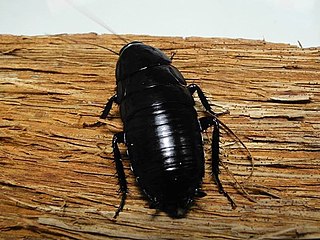
Eurycotis lixa, the hustler cockroach, is a species of cockroach in the family Blattidae. It is found in North America and the Caribbean.

Blattoidea is a superfamily of cockroaches and termites in the order Blattodea. There are about 17 families and more than 4,100 described species in Blattoidea.
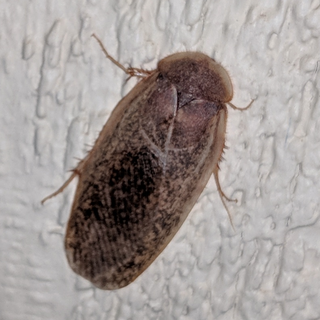
Arenivaga apacha, the Apache sand cockroach, is a species of cockroach in the family Corydiidae. It is found in North America.
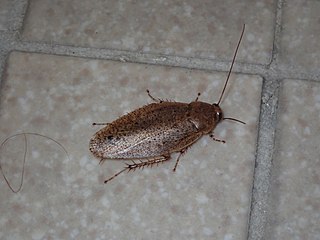
Epilampra maya, the Maya cockroach, is a species of cockroach in the family Blaberidae. It is found in Central America and North America.

Neostylopyga rhombifolia, the harlequin roach, is a species of cockroach in the family Blattidae. It is found in North America, Oceania, and Southern Asia.

Cryptocercus wrighti is a species of cockroach in the family Cryptocercidae. It is found in North America.
Arenivaga erratica, the erratic sand cockroach, is a species of cockroach in the family Corydiidae. It is found in Central America and North America.

Eremoblatta subdiaphana, the hairy desert cockroach, is a species of cockroach in the family Corydiidae. It is found in North America.

Ectobius sylvestris, known generally as the forest cockroach or lesser cockroach, is a species of cockroach in the family Ectobiidae. It is found in Europe and Northern Asia, North America, and temperate Asia.
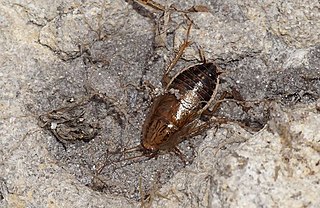
Cariblatta minima, the least yellow cockroach, is a species of cockroach in the family Ectobiidae. It is found in North America and the Caribbean.

Latiblattella rehni, or Rehn's cockroach, is a species of cockroach in the family Ectobiidae. It is found in North America and the Caribbean.
Arenivaga tonkawa, the tonkawa sand cockroach, is a species of cockroach in the family Corydiidae. It is found in Central America and North America.

Cryptocercus punctulatus, known generally as brown-hooded cockroach, is a species of cockroach in the family Cryptocercidae. Other common names include the woodroach, wingless wood roach, and eastern wood-eating cockroach. It is found in North America.
C. punctulatus is an oviparous cockroach in the family Cryptocercidae that excavates galleries in rotted wood. Field evidence suggests that pairs of C. punctulatus have a single reproductive episode during which they produce a mean of 73 eggs, in up to four oothecae. An extended period of brood care, which can last three years or longer, follows and includes defense of the family, gallery excavation, sanitation of the nest and, in the early stages, trophallactic feeding of the young. Nymphs are born without the cellulolytic protozoan symbionts they require to digest their wood diet; consequently, neonates rely on adults for nourishment... The altricial extreme of the developmental spectrum in cockroaches is currently represented by Cryptocercus punctulatus: this species hatches eyeless, with a pale, thin cuticle, is defended by parents in a nest, and is dependent on parents for symbionts and nourishment.
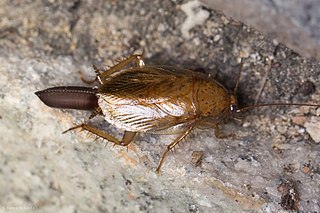
Latiblattella lucifrons, the pale headed cockroach, is a species of cockroach in the family Ectobiidae. It is found in Central America and North America.
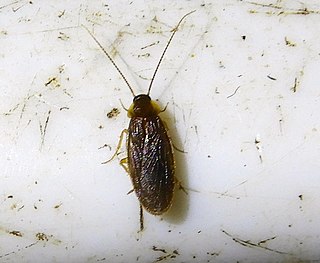
Compsodes schwarzi, or Schwarz's hooded cockroach, is a species of cockroach in the family Corydiidae. It is found in Central America and North America.
Euthlastoblatta abortiva, the fragile cockroach, is a species of cockroach in the family Ectobiidae. It is found in Central America and North America.
Euthlastoblatta is a genus of cockroach in the family Ectobiidae. There are about nine described species in Euthlastoblatta.
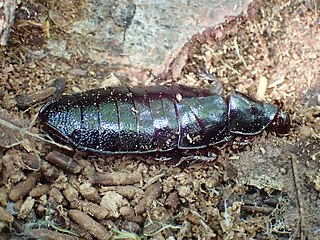
Cryptocercus darwini is a species of cockroach in the family Cryptocercidae. It is found in North America.
















